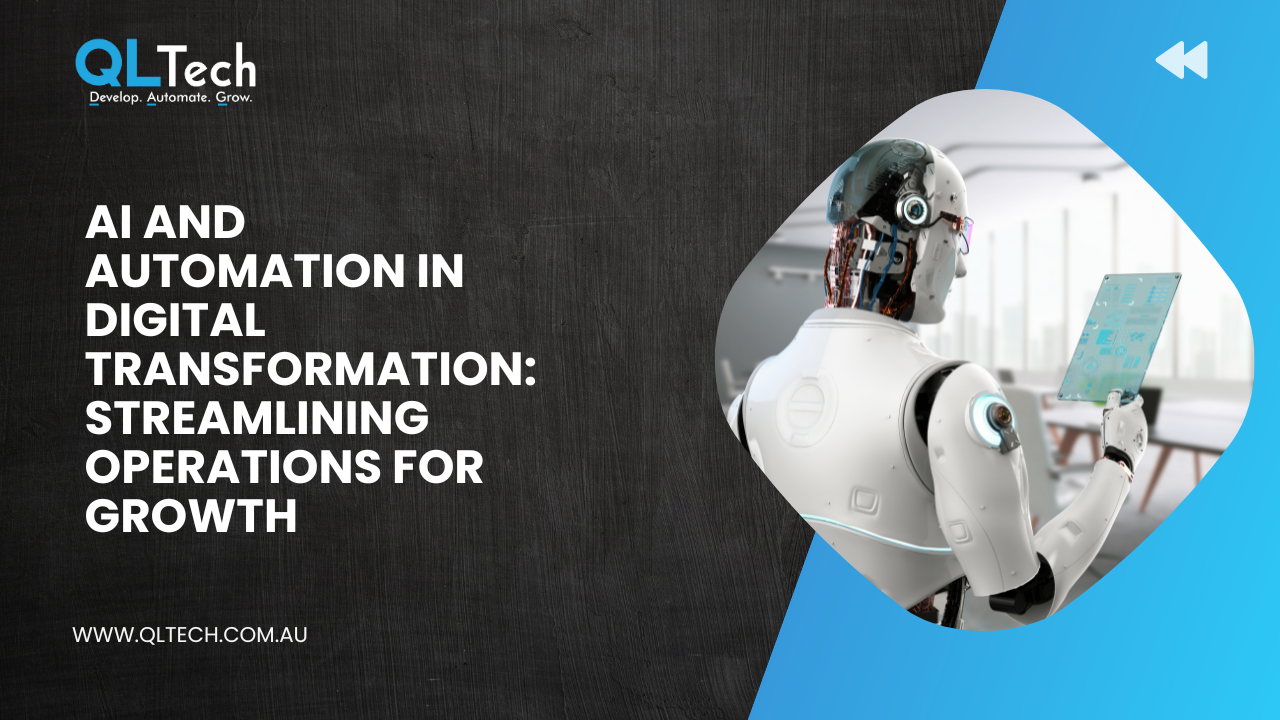AI and Automation in Digital Transformation: Streamlining Operations for Growth
Digital transformation has become a business imperative in today’s rapidly evolving technological landscape. Among the transformative technologies, artificial intelligence (AI) and automation stand out as powerful tools for streamlining operations, enhancing efficiency, and driving growth. By leveraging AI and automation, organisations can optimise processes, make data-driven decisions, and deliver superior customer experiences. In this article, we will explore how the integration of AI and automation can fuel digital transformation, leading to operational excellence and sustainable growth.

- Defining AI and Automation in Digital Transformation: AI involves the development of systems that can perform tasks that typically require human intelligence, such as decision-making, problem-solving, and language understanding. Automation, on the other hand, involves the use of technology to perform tasks without human intervention.
- Enhancing Operational Efficiency: AI-powered automation can streamline routine and repetitive tasks, freeing up human resources to focus on high-value activities that require creativity and critical thinking. This leads to increased operational efficiency and productivity.
- Data-Driven Decision-Making: AI can analyse large volumes of data in real-time to provide insights that inform decision-making. Automated data processing enables organisations to make informed choices that drive business growth.
- Predictive Analytics: AI-driven predictive analytics use historical data to forecast future trends and outcomes. This enables businesses to proactively adjust strategies and allocate resources to capitalise on opportunities.
- Personalised Customer Experiences: AI-powered automation can analyse customer data to create personalised experiences and recommendations. This enhances customer satisfaction and loyalty.
- Chatbots and Customer Support: Chatbots powered by AI can handle customer queries, provide information, and even initiate sales conversations 24/7. This boosts customer engagement and support efficiency.
- Supply Chain Optimisation: AI-driven automation can monitor inventory levels, demand patterns, and production processes to optimise supply chain operations, reducing costs and delivery times.
- Risk Management and Security: AI can identify anomalies and patterns that might indicate security breaches or fraud. Automated security systems can respond to threats in real-time, safeguarding sensitive data.
- Process Optimisation: Automation can streamline complex workflows by eliminating bottlenecks and minimising errors. This leads to faster processes, reduced operational costs, and improved quality.
- Scalability and Adaptability: AI-driven automation systems can scale seamlessly with growing business needs and adapt to changing market conditions, ensuring long-term operational effectiveness.
Conclusion:
AI and automation are at the forefront of digital transformation, reshaping the way organisations operate and compete. By leveraging the capabilities of AI to analyse data, make predictions, and facilitate decision-making, and by automating routine tasks, businesses can achieve operational excellence and position themselves for growth. The integration of AI and automation enhances customer experiences, optimises supply chains, and empowers employees to focus on strategic initiatives. As organisations continue to embrace digital transformation, the symbiotic relationship between AI and automation will play a pivotal role in fostering innovation, efficiency, and sustainable growth in the dynamic business landscape.